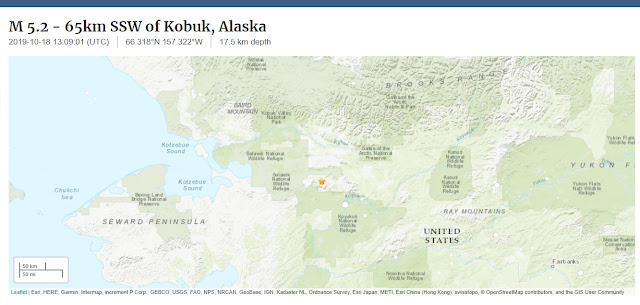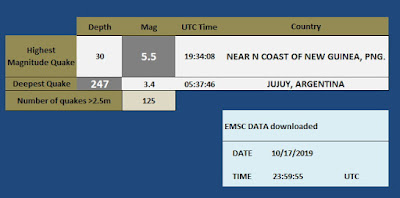By: Gordon Rutherford
Lunar orbit position on 19 October 2019 Saturday 12:00 UTC
NORTHERN HEMISPHERE AVERAGE
Moonrise 11:20 pm
Median 05:35 am
Moonset 12:28 pm
TODAY - SATURDAY, OCTOBER 19, 2019
The Moon today is in a Waning Gibbous Phase. This is the first phase after the Full Moon occurs. It lasts roughly 7 days with the Moon’s illumination growing smaller each day until the Moon becomes a Last Quarter Moon with a illumination of 50%. The average Moon rise for this phase is between 9am and Midnight depending on the age of the phase. The moon rises later and later each night setting after sunrise in the morning. During this phase the Moon can also be seen in the early morning daylight hours on the western horizon.
It is Hunter Moon
The Full Moon is called the "Hunter Moon" of October 2019.
Neap tide
There is low ocean tide today. Sun and Moon gravitational forces are not aligned, but meet at big angle, so their combined tidal force is weak.
Moon before perigee
8 days after point of apogee on 10 October 2019 at 18:29. The lunar orbit is getting closer, while the Moon is moving inward the Earth. It will keep this direction for the next 6 days, until it get to the point of next perigee on 26 October 2019 at 10:41.
Distance to Moon 379 004 km
Moon is 379 004 km (235 502 mi) away from Earth on this date. Moon moves closer next 6 days until perigee, when Earth-Moon distance will reach 361 316 km (224 511 mi).
Moon before northern standstill
13 days after previous South standstill on 5 October 2019 at 16:01, when Moon has reached southern declination of ∠-22.788°. Next day the lunar orbit moves northward to face North declination of ∠22.947° in the next northern standstill on 20 October 2019 at 08:07.
Next NEW MOON
- Syzygy in 8 days
After 8 days on 28 October 2019 at 03:38, the Moon will be in New Moon geocentric conjunction with the Sun and this alignment forms next Sun-Moon-Earth syzygy.
Next Full Moon is the Beaver Moon of November 2019 after 24 days on 12 November 2019 at 13:34.
WORKS CITED
https://www.moongiant.com/phase/today/
https://lunaf.com/lunar-calendar/
https://www.calendar-365.com/moon/current-moon-phase.html
https://www.moontracks.com/declinations.html
https://www.timeanddate.com/moon/usa/miami




















































